Lavender Wyandotte is one of the rarest chickens in the poultry world, and it’s no wonder, given their distinctive appearance, and dual-purpose (eggs, meat) capabilities.
If you’re considering adding these special chickens to your flock but need more information about them and help getting or purchasing them.
Then this article is for you, we will discuss everything about them and guide you to buy or get them for your flock.
Quick Overview of Lavender Wyandotte Chickens
| Origin | USA |
| Purpose | Egg Laying and Meat |
| Color | Lavender |
| Rarity | Very Rare |
| Maturing Age | Around 8 months |
| Personality and Temperament | Docile, Active, Gentle, Friendly |
| Eggs Per Year | Good (4/week, 200/year) |
| Egg Color | Cream |
| Egg Size | Medium/Large |
| Comb | Rose Comb |
| Legs Color | Yellow |
| Weight | 7 to 8 lbs |
| Hardiness | Cold Hardy, doesn’t handle the heat very well |
| Broodiness | Possible |
Brief History of Lavender Wyandotte Chicken
The Lavender Wyandotte breed got its name from a Native American group in the Northeast called the Wyandotte Nation.
They are a variety of the Wyandotte chicken that originated in the United States in the late 1800s, likely developed from Silver Laced Wyandottes and possibly other breeds like Cochins or Plymouth Rocks, and the product of chicken breeders in New York and Massachusetts.
However, they are not as widely recognized as some other Wyandotte varieties.
Appearance of Lavender Wyandotte Chickens
Lavender Wyandotte chickens get their Lavender color from a special gene. This gene makes their black and red/brown colors lighter. When they have two copies of this gene, they show the lavender color.
In appearance, these chickens are somehow the same as blue star, blue australorp.
These chickens are different from others because of their lavender or bluish-gray feathers. They’re big birds, with roosters weighing around 7 to 8 pounds and hens around 5 to 6 pounds.
But there’s a problem with this gene. It can make their feathers weak, especially in the tail. Some breeders even call it the “tail shredder” gene because of this.
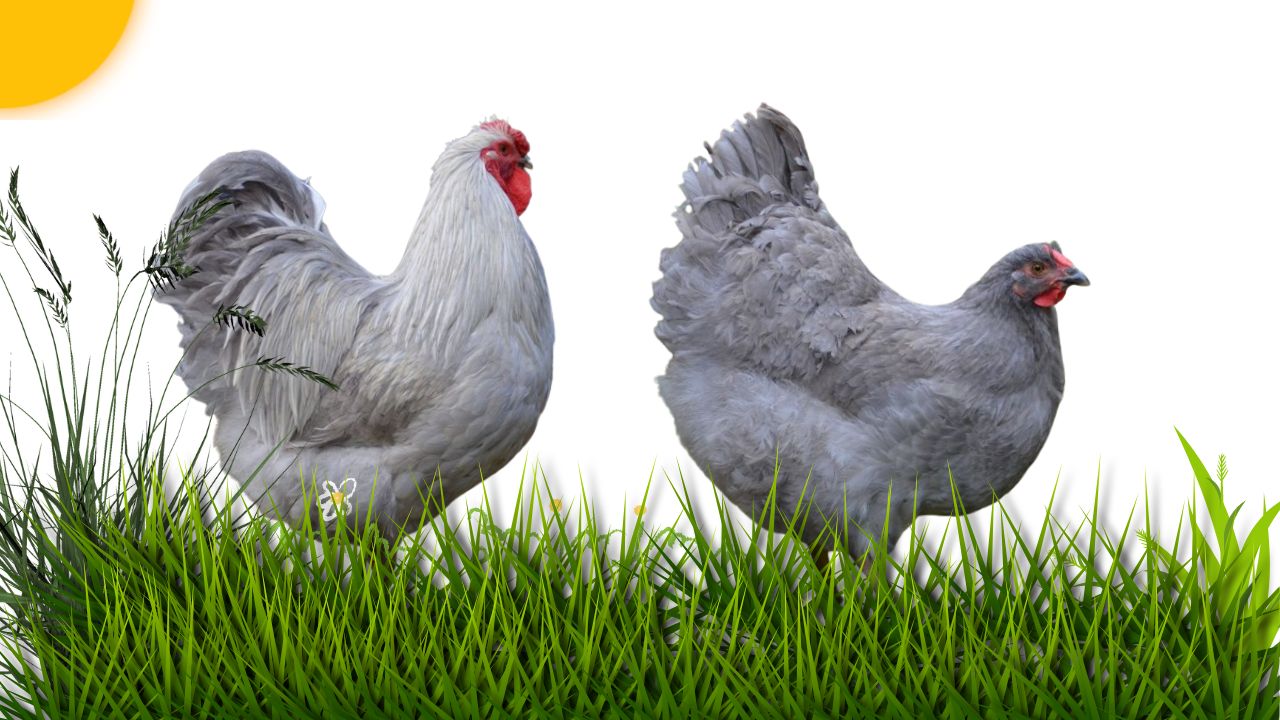
Lavender Wyandotte Personality
These chickens have a calm and friendly personality which makes them perfect family pets.
Lavender Wyandotte chickens are docile, active, and gentle birds. They move around gracefully and are generally quiet chickens.
These chickens usually don’t get broody much, but they make good moms. They’re not great at flying because they’re heavy.
Lifespan of Lavender Wyandotte Chicken
Several factors that affect and influence the lifespan of chickens include genetics, diet, living conditions, healthcare, stress levels, predator protection, and climate.
The lifespan of backyard chickens is 5–10 years with proper care, farm chickens 6–8 weeks for (meat) & 1–2 years for (eggs), and wild chickens endure 3–7 years.
On average a Lavender Wyandotte Chicken can live from 6-12 years with proper care, balanced feed, and ideal environment.
Lavender Wyandotte Chicken Egg Production
Lavender Wyandotte hens are good layers and they normally start laying eggs at the age of around 4-5 months.
They’re hardy and can handle the cold well In the winter. That is why these chickens are good at laying eggs, way better than other types of chickens in the winter or cold conditions.
On Average lavender wyandotte, hen can lay approximately 180–200 per year, meaning 3–4 eggs per week which are medium to large in size and brown/cream-colored.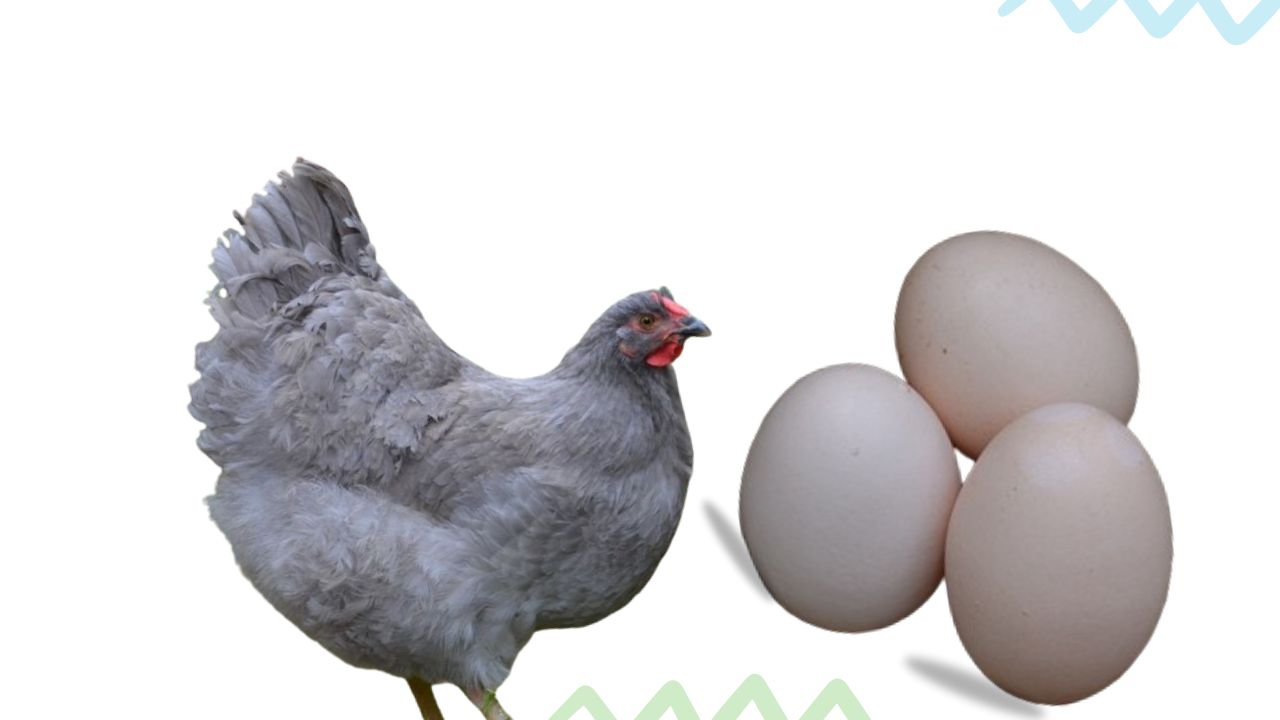
Buying Lavender Wyandotte Chicken Guide
Here’s a guide to help you with buying Lavender Wyandotte chickens:
- Before purchasing Lavender Wyandotte chickens or chicks or eggs, it’s essential to do some research about the breed.
- Then look for reputable breeders or hatcheries that specialize in chickens. You can search online or ask for recommendations from other chicken enthusiasts.
- If possible, visit the breeder’s facility or farm to see firsthand how the chickens are raised. Pay attention to the cleanliness and the health of the chickens.
- When choosing Lavender Wyandotte chickens, look for signs of good health, check for bright eyes, clean feathers, alertness, and active behavior.
- Make arrangements for safe transportation from the breeder to your home. Ensure that they are transported in appropriate carriers or crates.
- Before bringing Lavender Wyandottes to your home, make sure you have a suitable coop, adequate space, nesting boxes, roosts, and access to fresh water and feed.
- Once you’ve brought your Lavender Wyandottes home, monitor their health closely during the initial adjustment period.
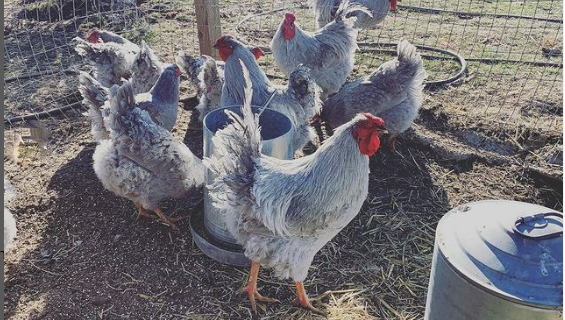
Hatching Lavender Wyandotte Chicken Eggs
Hatching Lavender Wyandotte chicken eggs can be a rewarding and joyful process, but it requires careful attention and proper incubation conditions to ensure successful hatching.
To hatch Lavender Wyandotte Chicken eggs, keep them warm at 99.5 degrees Fahrenheit and make sure the air is slightly moist, at 55% humidity. When everything is in ideal condition, about 80% of eggs hatch successfully.
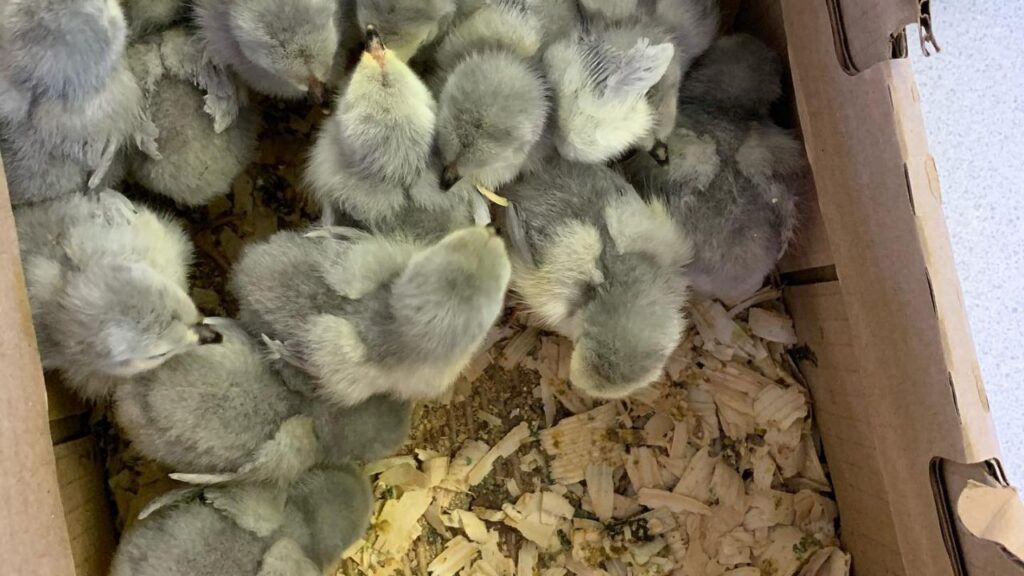
Here is the brief process of incubating and hatching eggs.
-
Selecting Eggs
Choose fresh, fertile Lavender Wyandotte eggs from healthy breeding stock. Avoid eggs with cracks, dirt, or irregularities.
-
Storing Eggs
If you’re not ready to start incubating immediately, store the eggs pointed end down in a cool around 55°F to 60°F or 13°C to 16°C humidity environment, but do not refrigerate the eggs.
-
Incubator Setting
Set up your incubator according to the manufacturer’s instructions. Ensure the temperature and humidity are stable and within the recommended ranges for chicken eggs typically 99.5°F or 37.5°C and 50-55% humidity for forced-air incubators, or 101°F or 38.5°C and 60-65% humidity for still-air incubators.
-
Egg Positioning
Place the eggs in the incubator with the pointed end slightly lower than the large end. This mimics how a hen would naturally position them.
-
Turning Eggs
Eggs need to be turned regularly to prevent the embryo from sticking to the shell. Most incubators have an automatic turning feature, but if yours doesn’t, manually turn the eggs at least three times a day, preferably an odd number of times to prevent the embryos from resting in the same position for too long.
-
Candling Eggs
Around day 6 or 7, you can start candling the eggs to check for signs of development. This involves shining a bright light through the egg to see inside. Remove any eggs that are infertile or show no signs of development.
-
Lockdown Period
Stop turning the eggs around day 18 and increase humidity to around 70-75%. This simulates the natural conditions a chick would experience in the final days before hatching.
-
Hatch Day
By day 21, you should start seeing pips in the eggshells as the chicks begin to hatch. Avoid opening the incubator during this time, as it can disrupt the hatching process and cause chicks to become stuck in their shells. Allow the chicks to hatch on their own, which can take up to 24 hours or more.
-
Brooding
Once the chicks have hatched and dried off, move them to a brooder with a heat lamp, chick starter feed, and water. Provide them with a warm, draft-free environment to thrive.
-
Care of Chicks
Monitor the chicks closely during their first few weeks of life, ensuring they have access to food, water, warmth, and a clean environment. Keep an eye out for any signs of illness or distress.
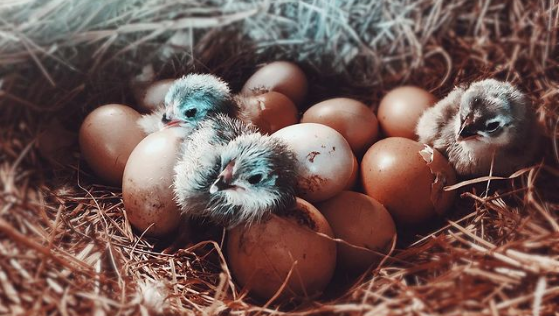
Preparing Lavender Wyandotte for Competitions
Shows and competitions can be a joyful and rewarding experience for you and your Lavender Wyandotte chickens, these chickens have the potential to stand out in the exhibitions.
Exhibitions and competitions are the opportunity for you to show the beauty and uniqueness of your chickens.
What judges look for:
In competitions and shows, judges typically look for several things including appearance, body shape, feathers, size/weight, health, comb/wattles, legs/feet, and temperament to evaluate the quality of the birds.
Preparing your Lavender Wyandotte bird for competitions requires special attention. Here’s a step-by-step guide:
- Bathing and Grooming
Give a bath to your Lavender Wyandotte to clean its feathers and remove any dirt. Use lukewarm water and a mild bird shampoo, rinse it completely, and then softly dry them.
- Care for Feathers
Check their feathers for any signs of damage or breakage, and trim any stray and unnecessary feathers carefully, ensuring not to cut too close to the skin.
- Feed and Exercise
Before the competition, focus on improving the bird’s overall condition, including providing a balanced diet, ample clean water, and sufficient exercise as well.
- Presenting the Chicken
Before presenting the bird ensure their feathers are clean and free from discoloration. Use a soft brush to gently fluff up the feathers and pay attention to their standing posture.
- Nail and Beak Trimming
Trim the bird’s nails and beak carefully to ensure they are neat, as overgrown nails or beaks have a bad effect.
- Health Checkup
Check the overall health of your Lavender Wyandotte, and look for any signs of illness or injury, such as lethargy, discharge from the eyes or nostrils, or abnormalities in the feathers or skin.
- Practice Handling
Train your Lavender Wyandotte to get used to being touched and looked at, as this is an important part of competitions. Practice showing your bird to judges and let them check its feathers, body shape, and health.
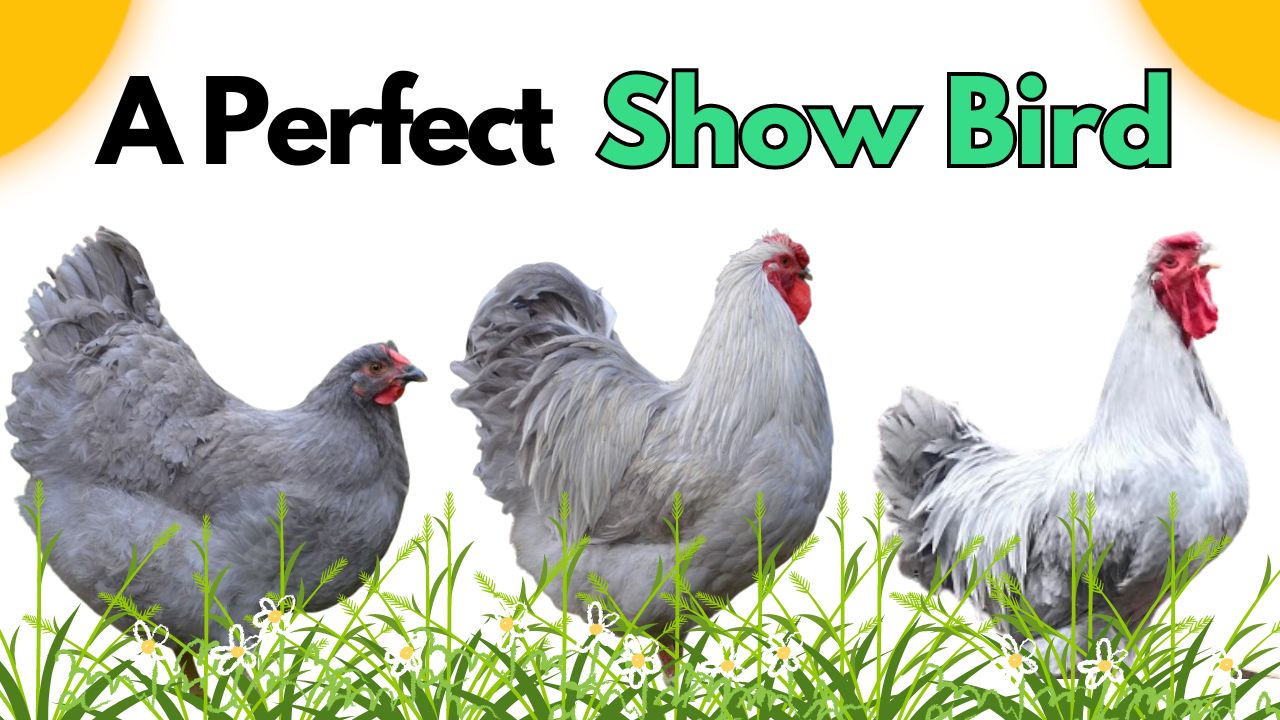
Specialized Care for Lavender Wyandotte Chickens
Like any other breed of chicken, they require specialized care to stay healthy and happy.
Housing:
They need a secure and spacious coop that protects them from predators, extreme weather conditions, and adequate roosting space.
These chickens also enjoy access to a run or free-range area where they can scratch around and forage for food.
However, due to their larger size (roosters can weigh up to 8 pounds), it is essential to provide them with slightly more space than smaller breeds.
Diet and Nutrition:
Lavender Wyandotte chickens are omnivores and have a varied diet consisting of grains, seeds, fruits, vegetables, insects, and small animals.
They require a high-quality commercial feed that is specifically formulated for laying hens to meet their nutritional needs.
Additionally, offering treats such as mealworms or kitchen scraps in moderation can be beneficial for keeping them entertained and satisfied.
Ensure access to clean water at all times. Like other chickens, Lavender Wyandottes are prone to crop impaction, so it is crucial to avoid feeding them long and fibrous food items such as grass clippings or whole fruits.
Health Concerns:
Overall, Lavender Wyandotte chickens are hardy and healthy birds. However, there are a few health concerns that owners should be aware of.
These include Marek’s disease, egg binding, bumblefoot, and respiratory infections. It is vital to keep a close eye on your chickens’ health.
Regularly cleaning the coop and ensuring proper ventilation can also help prevent respiratory issues. Additionally, providing a balanced diet can reduce the risk of egg binding in hens.
Grooming and Maintenance:
Lavender Wyandotte chickens have feathers on their legs and feet, making them more susceptible to mites and lice.
Regularly inspecting your birds for any signs of pests and treating them promptly is essential. Additionally, trimming their toenails every few months can prevent issues with walking and potential injuries.
Grooming also includes bathing your chickens occasionally, especially if they are kept in a dusty environment.
This can help keep their feathers clean and free from mites or lice. It is important to use chicken-safe products, such as a mild shampoo or apple cider vinegar diluted in water, for bathing.
Lavender Wyandotte vs Lavender Orpington
These are popular chicken breeds prized for their unique lavender coloring and gentle personalities.
Lavender Wyandottes have a compact, rounded body shape with rose combs and clean legs and their feathers are a soft lavender-gray color.
Lavender Orpingtons are larger birds with a broad, sturdy build, fluffy plumage, and a single comb and their lavender coloring is a bit lighter and more uniform compared to Wyandottes.
They both are known for their docile and friendly nature, making them great choices for families or beginners in chicken keeping.
Lavender Wyandottes are good layers of brown/cream eggs, producing an average of 180–200 eggs a year.
Lavender Orpingtons are also decent layers, typically laying around 170-200 medium/large brown eggs per year.
They both are cold-hardy by nature, but the rose comb of the Wyandotte protects against frostbite compared to the single comb of the Orpington. This makes Wyandottes slightly better suited for colder climates.
Lavender Wyandottes generally don’t go broody, while Lavender Orpingtons have a reputation for being more prone to broodiness, meaning they may be more inclined to sit on a clutch of eggs and hatch them out.
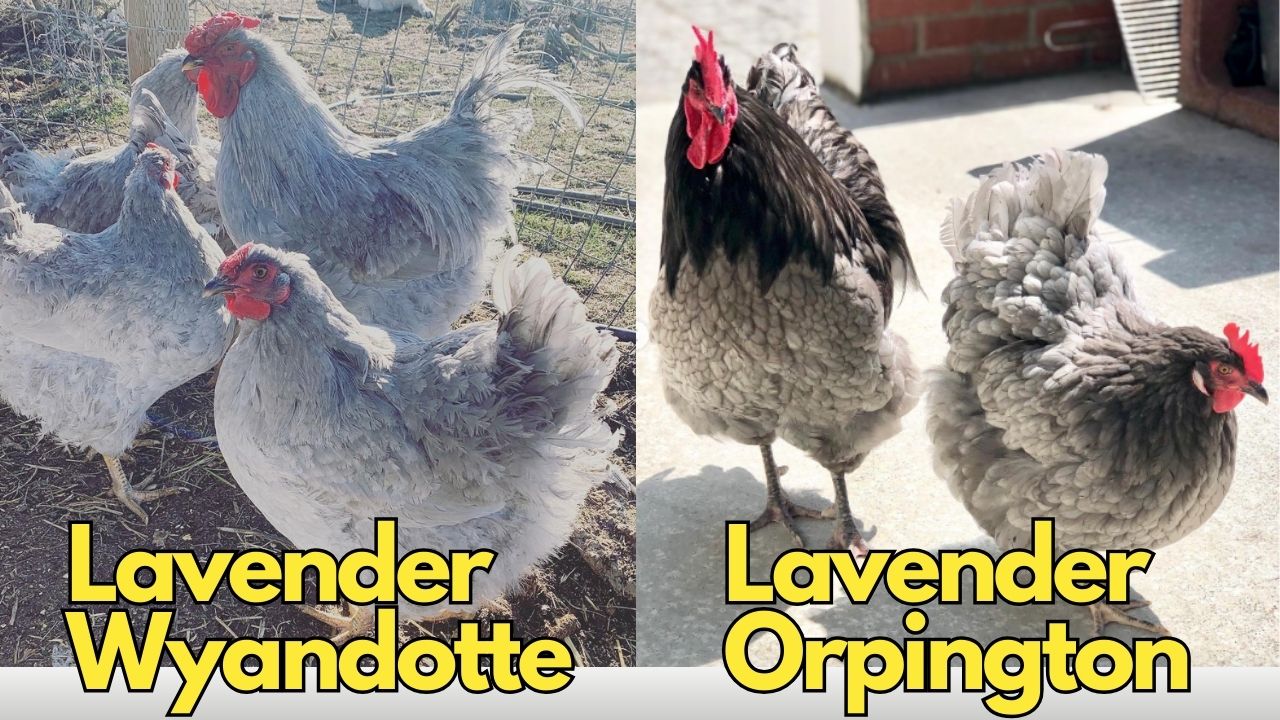
Final Thoughts
In conclusion, the Lavender Wyandotte chicken stands out as a delightful addition to any flock, with its stunning appearance, gentle temperament, and practical egg-laying abilities.
Remember to prioritize reputable breeders or hatcheries, ensuring the health and quality of your chickens/chicks/eggs.
Consider the space, feed, and care requirements outlined here to provide them with a happy and thriving environment.
Now feel free to share your questions and concerns with us. We are here to assess you and would love to help you.
FAQs
What color of eggs do Wyandotte chickens lay?
Wyandotte chickens produce 180 to 200 cream to brown colored eggs which are medium to large.
What color egg does a lavender Orpington lay?
Lavender Orpington chickens lay medium/large, brown, or light brown eggs and lay from 170-200 eggs per year.
How often do wyandottes lay eggs?
Wyandotte chickens normally begin laying when they are between 4-5 months of age and lay 3 or 4 eggs per week.
Are Wyandotte chickens heat-tolerant?
Not well, wyandotte chickens are highly tolerant of cold weather, but they struggle in hot climates due to their low heat tolerance.
At what age do Wyandottes start laying?
Wyandotte chickens will start laying between 4-5 months of age and continue to lay for several years.
Hello! I’m Ibrahim, the owner and writer of this blog. I run a chicken farm with 160 chickens, and I’ve gained a lot of knowledge about raising and caring for them. Now, I want to share my insights and experiences with you to help you in chicken keeping.

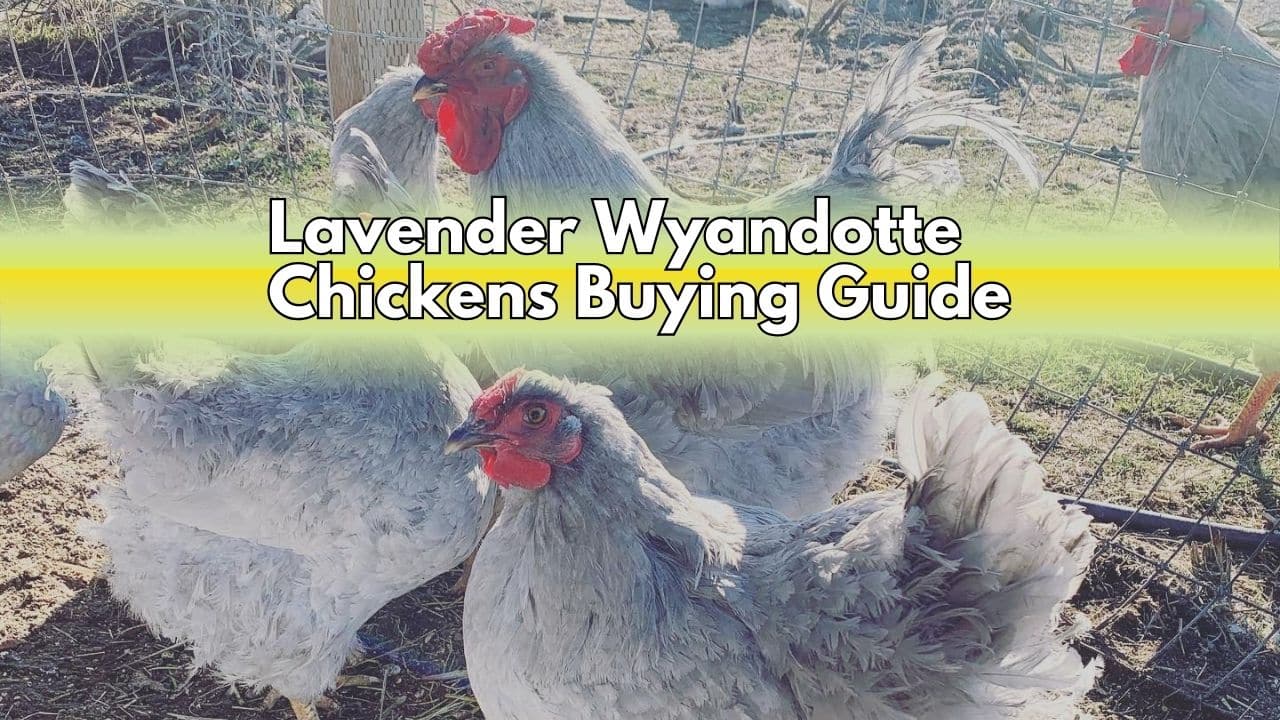
5 thoughts on “Everything About Lavender Wyandotte Chickens”